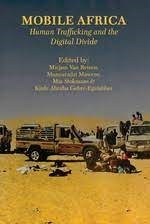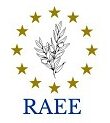Editors: Mirjam van Reisen, Munyaradzi Mawere, Kinfe Abraha Gebre-Egziabher
Year: 2019
Language: English
Publisher: Langaa RPCIG, Cameroon
ISBN: 978-9-9565-511-32
Pages: 762
Dimensions: 229 x 152mm

What happens at the nexus of the digital divide and human trafficking? This book examines the impact of the introduction of new digital information and communication technology (ICT) – as well as lack of access to digital connectivity – on human trafficking. The different studies presented in the chapters show the realities for people moving along the Central Mediterranean route from the Horn of Africa through Libya to Europe. The authors warn against an over-optimistic view of innovation as a solution and highlight the relationship between technology and the crimes committed against vulnerable people in search of protection.
In this volume, the third in a four-part series ‘Connected and Mobile: Migration and Human Trafficking in Africa’, relevant new theories are proposed as tools to understand the dynamics that appear in mobile Africa. Most importantly, the editors identify critical ethical issues in relation to both technology and human trafficking and the nexus between them, helping explore the dimensions of new responsibilities that need to be defined. The chapters in this book represent a collection of well-documented empirical investigations by a young and diverse group of researchers, addressing critical issues in relation to innovation and the perils of our time.
Book Chapters
Preface by Chief Fortune Charumbira
Part 1 – Theoretical Perspectives ………… 1
- Chapter 1: Black Holes in the Global Digital Landscape: The Fuelling of Human Trafficking on the African Continent by Mirjam Van Reisen, Munyaradzi Mawere, Mia Stokmans, Primrose Nakazibwe, Gertjan Van Stam & Antony Otieno Ong’ayo ………… 3
- Chapter 2: Network Gatekeepers in Human Trafficking: Profiting from the Misery of Eritreans in the Digital Era by Mirjam Van Reisen, Klara Smits, Mia Stokmans & Munyaradzi Mawere ………… 33
- Chapter 3: Bound Together in the Digital Era: Poverty, Migration and Human Trafficking by Munyaradzi Mawere …………63
- Chapter 4: Tortured on Camera: The Use of ICTs in Trafficking for Ransom by Amber Van Esseveld ………… 91
Part 2 – Traumatizing Trajectories ………… 113
- Chapter 5: ‘Sons of Isaias’: Slavery and Indefinite National Service in Eritrea by Mirjam Van Reisen, Makeda Saba & Klara Smits ………… 115
- Chapter 6: Journeys of Youth in Digital Africa: Pulled by Connectivity by Rick Schoenmaeckers ………… 169
- Chapter 7: Not a People’s Peace: Eritrean Refugees Fleeing from the Horn of African to Kenya by Sophie Kamala Kuria & Merhawi Tesfatsion Araya ………… 189
- Chapter 8: Israel’s ‘Voluntary’ Return Policy to Expel Refugees: The Illusion of Choice by Yael Agur Orgal, Gilad Liberman & Sigal Kook Avivi …………. 209
- Chapter 9: The Plight of Refugees in Agadez in Niger: From Crossroad to Dead End by Morgane Wirtz ………… 239
- Chapter 10: Lawless Libya: Unprotected Refugees Kept Powerless and Silenced by Mirjam Van Reisen, Klara Smits & Morgane Wirtz ………… 261
- Chapter 11: The Voices of African Migrants in Europe: Isaka’s Resilience by Robert M. Press ………… 295
- Chapter 12: Desperate Journeys: The Need for Trauma Support for Refugees by Selam Kidane & Mia Stokmans ………… 323
- Chapter 13: Identifying Survivors of Torture: “I Never Told What Happened to Me in the Sinai” by Sigal Rozen ………… 353
Part 3 – Psychological Impact of Ongoing Trauma ………… 393
- Chapter 14: Refugee Parenting in Ethiopia and the Netherlands: Being an Eritrean Parent Outside the Country by Bénédicte Mouton, Rick Schoenmaeckers & Mirjam Van Reisen ………… 395
- Chapter 15: Journeys of Trust and Hope: Unaccompanied Minors from Eritrea in Ethiopia and the Netherlands by Rick Schoenmaeckers, Taha Al-Qasim & Carlotta Zanzottera ………… 425
- Chapter 16: Refugees’ Right to Family Unity in Belgium and the Netherlands: ‘Life is Nothing without Family’ by Mirjam Van Reisen, Eva Berends, Lucie Delecolle, Jakob Hagenberg, Marco Paron Trivellato & Naomi Stocker ………… 449
Part 4 – Problem Framing ………… 495
- Chapter 17: The Representation of Human Trafficking in Documentaries: Vulnerable Victims and Shadowy Villains by Nataliia Vdovychenko ………… 497
- Chapter 18: Language Dominance in the Framing of Problems and Solutions: The Language of Mobility by Munyaradzi Mawere, Mirjam Van Reisen & Gertjan Van Stam ………… 527
Part 5 – Extra-territorialism of Migration and International Responsibilities ………… 557
- Chapter 19: The Shaping of the EU’s Migration Policy: The Tragedy of Lampedusa as a Turning Point by Klara Smits & Ioanna Karagianni ………… 559
- Chapter 20: Sudan and the EU: Uneasy Bedfellows by Maddy Crowther & Martin Plaut ………… 593
- Chapter 21: Uncomfortable Aid: INGOs in Eritrea by Makeda Saba ………… 631
- Chapter 22: Complicity in Torture: The Accountability of the EU for Human Rights Abuses against Refugees and Migrants in Libya by Wegi Sereke & Daniel Mekonnen ………… 673
- Chapter 23: Playing Cat and Mouse: How Europe Evades Responsibility for its Role in Human Rights Abuses of Migrants and Refugees by Annick Pijnenburg & Conny Rijken ………… 697
